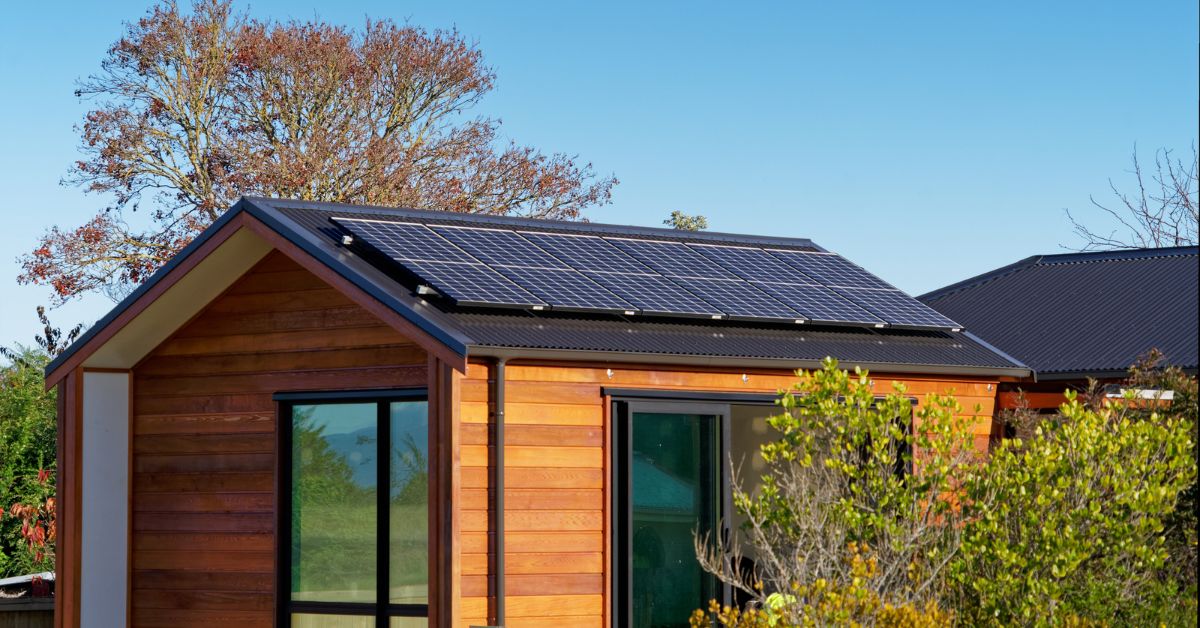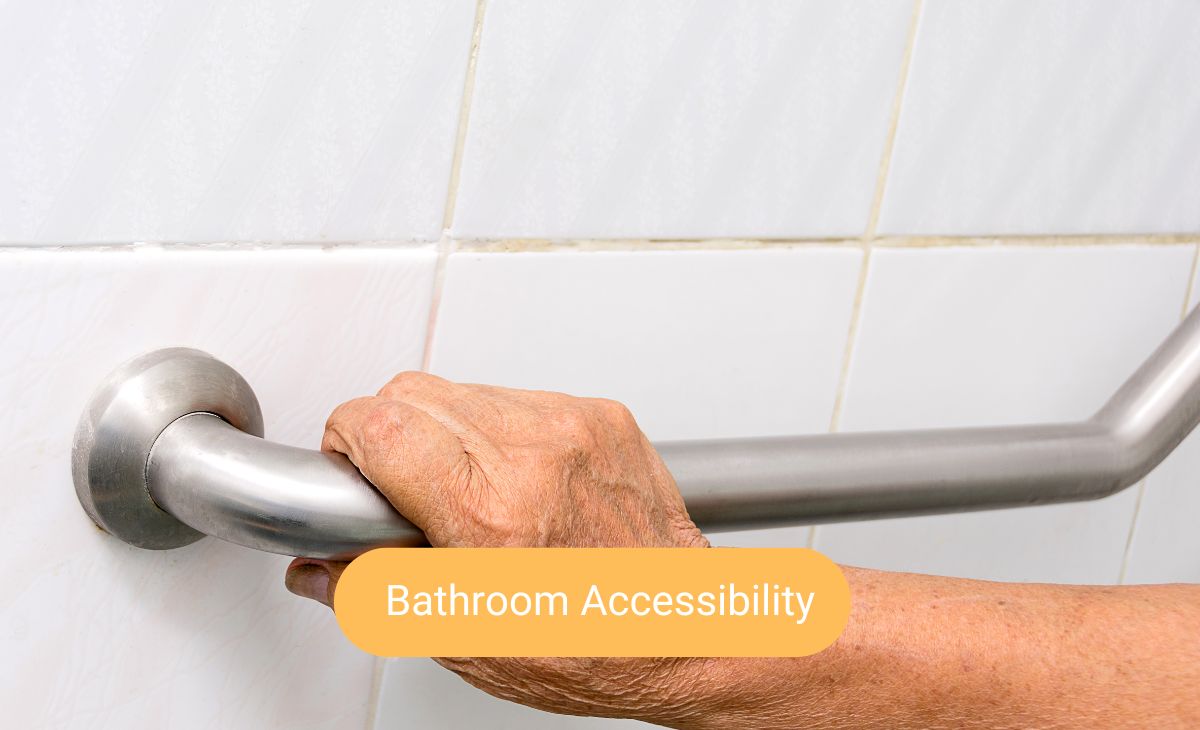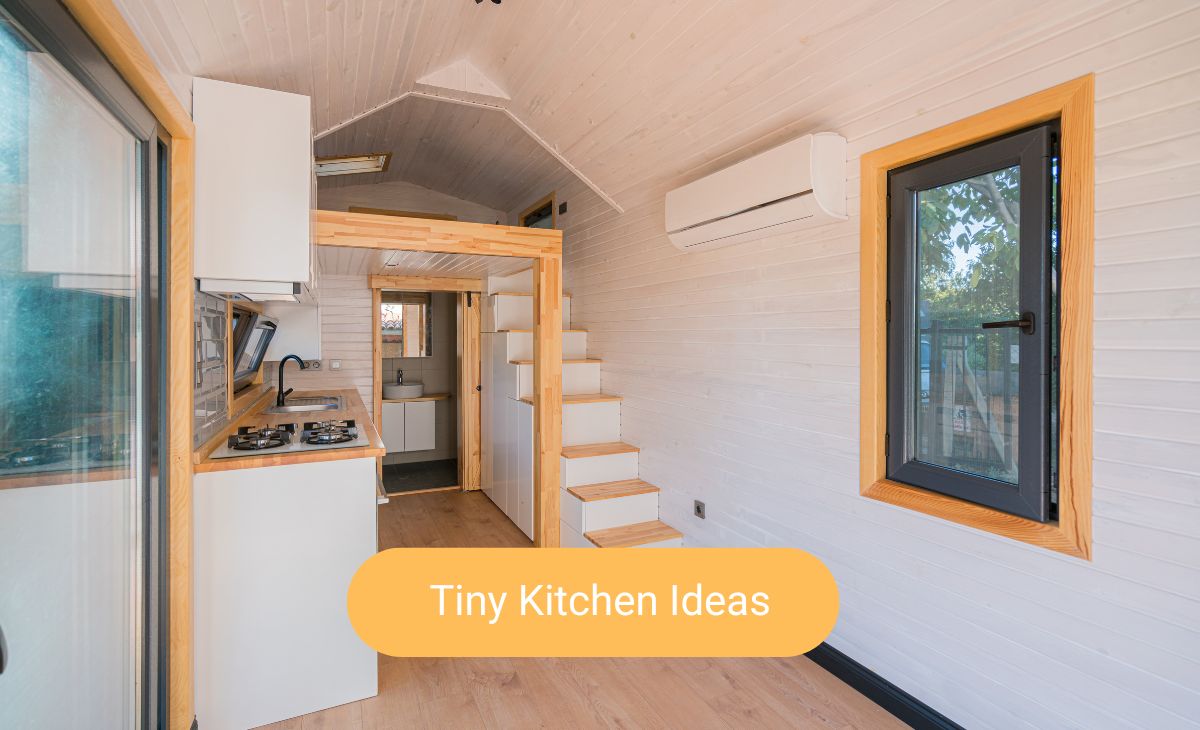Welcome to the realm of sustainability! This article will explore the exciting world of installing solar power for your tiny house or camper van. Prepare to harness the energy of the sun and live off the grid in style!
What is Off-Grid Solar Power?
Off-grid solar power or energy is an intriguing concept that enables you to exist independently of conventional power grids. It’s all about harnessing solar energy to power your tiny house or camper van. The magic is performed by solar panels, which convert sunlight into usable electrical energy.
The essential components of an off-grid solar system are the solar panels, charge controller, battery bank, and inverter.
The heroes (who harness the sun’s beams and produce direct current electricity) are the solar panels. The charge controller regulates the energy transfer from the solar panels to the battery bank to prevent overcharging and damage.
The battery bank then reserves the excess energy produced during sunny periods so that you have power when the sun is not shining. The inverter transforms the conserved direct current (DC) energy into alternating current (AC) electricity that powers your devices and appliances.
Off-grid solar energy permits unrestricted mobility, unencumbered by electrical outlets or utility expenditures. It is a sustainable and environmentally friendly method to embrace a mobile lifestyle while minimizing your environmental impact.
Energy Consumption Evaluation
Before investing in a solar setup, it is essential to effectively assess your energy requirements. Make a list of the electrical appliances and devices you intend to use in your living space. Create a list of these items, including their wattage ratings and energy consumption data.
Next, estimate the device’s daily and weekly utilization. Consider factors such as the number of hours you use each item on a daily basis and the frequency of use all through the week.
Determine your daily energy requirement by adding the total wattage or electrical usage of all the devices. It is advisable to include a buffer to accommodate unexpected power needs or future additions to your setup.
Also, consider the weather and climate of the locations where you will be traveling or residing. For dependable power supply, regions with less sunlight may require an even bigger solar panel array or battery bank.
Finally, don’t overlook energy efficiency! Choose energy-efficient appliances and LED lighting to minimize your overall energy consumption. This will enable you to more accurately size your solar system.
By accurately assessing your energy requirements, you can ensure that your off-grid renewable energy source is customized to meet your lifestyle demands while keeping you charged and ready for your upcoming excursions.
Selection of the Right Equipment
Acquiring the right solar equipment is essential for having an effective off-grid solar setup. Start by selecting solar panels that meet your energy requirements and fit on the roof of your tiny home or camper van.
Take note: you need to ensure that the charge controller is compatible with the voltage of the solar panel and is capable of handling the total panel current.
With the battery bank, it is important to consider the battery capacity and design. Lead-acid batteries are less expensive but are heavier and have a shorter lifespan than lithium-ion batteries.
Choose an inverter that can accommodate the maximal wattage of your most power-hungry devices and provides the correct AC output for your appliances.
Keep in mind that quality and durability are essential, particularly for mobile setups that are susceptible to vibrations and the elements.
Consider the equipment’s warranty and after-sales support as well when making your selections.
Design of the Solar Power System
Designing a solar energy system entails making sure that it suits your energy needs while maximizing performance. As mentioned earlier, determine the total wattage required to power all of your devices and appliances.
Size the solar panel array and battery capacity accordingly to meet your daily energy requirements and provide sufficient energy storage for cloudy days. To ensure the success and efficiency of your tiny home or camper van’s solar power setup, you should always adhere to safety guidelines and best practices during the installation process.
Solar Power System Installation
It goes without saying that solar installation must be performed with care to ensure the system’s effectiveness. Install solar panels on the roof of your tiny house or camper van using the proper brackets and fasteners.
Connect the solar panels to the charge controller, ensuring that the polarity is correct and the connections are secure. Following the manufacturer’s instructions and using the correct cable size, connect the charge controller to the battery bank for optimal charging efficiency.
Install the inverter and attach it to the battery bank to enable the conversion of DC power to AC power for your electrical appliances. Always prioritize safety during the installation procedure, and if necessary, consider hiring a professional.
Maintenance and Troubleshooting
Regular maintenance is required to keep your solar energy system operating efficiently. Routinely inspect the solar panels for any grime, debris, or shading that may hinder their performance. As necessary, clean the panels and ensure they are securely affixed.
Regularly inspect the battery bank for signs of corrosion and add water to lead-acid batteries as well. Monitor the charge controller and the inverter for any error messages or abnormal behavior. In the event of problems, consult the troubleshooting section of the user manual. You can also contact a qualified solar technician for prompt diagnosis and resolution, which we highly recommend.
Maximizing Energy Efficiency
As you’ll soon realize for yourself, with off-the-grid living, every watt counts! Maximizing energy efficiency is the key to optimizing your solar energy system and your power reserves. Here are some practical strategies to help you become an expert in energy conservation:
LED Lighting – Replace incandescent light bulbs with energy-efficient LED lighting. LED light lamps consume significantly less electricity and last significantly longer, saving you both energy and money.
Energy-Efficient Appliances – Choose energy-efficient appliances with wattage ratings that are significantly reduced. There are energy-efficient models that accomplish the same duties without depleting your battery supply.
Smart Power Management – Utilize smart power cords and timers to regulate energy consumption. They prevent energy loss from appliances in dormant mode and ensure that no electricity is wasted.
Energy-Saving Habits – Cultivate energy-saving habits, such as turning off lighting, electronics, and appliances whenever they are not in use. Trust us – these seemingly insignificant actions add up over time!
Natural Ventilation and Insulation – Incorporate appropriate ventilation and insulation into the design of your tiny home or camper van. This decreases the need for heating and ventilation, thereby reducing the strain on your solar power system.
Energy Audits – Assess your energy consumption frequently and identify areas for improvement. An energy audit can help you identify energy wasters and effectively address them.
Efficient Cooking – Choose energy-efficient culinary methods, such as a solar cooker or a portable propane stove, to reduce the amount of electricity used in the kitchen.
Low-Power Gadgets – Consider using low-power devices, such as laptops rather than desktop computers, to conserve energy.
By adopting these energy-saving practices, you will not only maximize your solar power potential, but you will also nurture a sustainable lifestyle with a smaller ecological footprint. Embrace the power of efficiency and see how it can transform your off-grid experience!
Going Beyond Solar Power
You’re aware of the fantastic advantages of solar energy, but there are other interesting options to consider as well! Beyond solar power, your tiny home or camper van can achieve an entirely new level of sustainability.
How? With the addition of a modest wind turbine! If you frequently find yourself in gusty regions, a wind turbine can generate additional energy on cloudy days. It’s like having a renewable energy source on standby!
A portable generator is another option, particularly if you intend to camp in areas with limited sunlight or during long winters. Choose a generator that operates on propane or another clean fuel to reduce your impact on the environment.
Consider a composting commode, too! This not only reduces water consumption but also contributes to the production of nutrient-rich compost for plants.
Also, don’t overlook water conservation. Collect rainwater in a storage tank or barrel for use in gardening and washing.
With these additional sustainable options, you can create a genuinely self-sufficient and environmentally friendly mobile oasis. Therefore, feel free to add these solutions to discover the optimal combination for your green goals!
Join the Solar-Powered Movement
You now have the knowledge necessary to install an off-grid solar power system for your tiny house or camper van! You can live sustainably, reduce your carbon footprint, and experience the freedom of the open road by harnessing the sun’s energy.
Remember to accurately assess your energy requirements, select the appropriate solar equipment, and design a system that fits your lifestyle. Prioritize routine maintenance to ensure optimal performance, and troubleshoot any arising issues.
In addition to optimizing energy efficiency, investigate other environmentally friendly options such as wind turbines, generators, composting toilets, and rainwater collection.
Embrace this eco-friendly journey and encourage others to do the same. Best wishes on your solar-powered journey towards a greener future!


